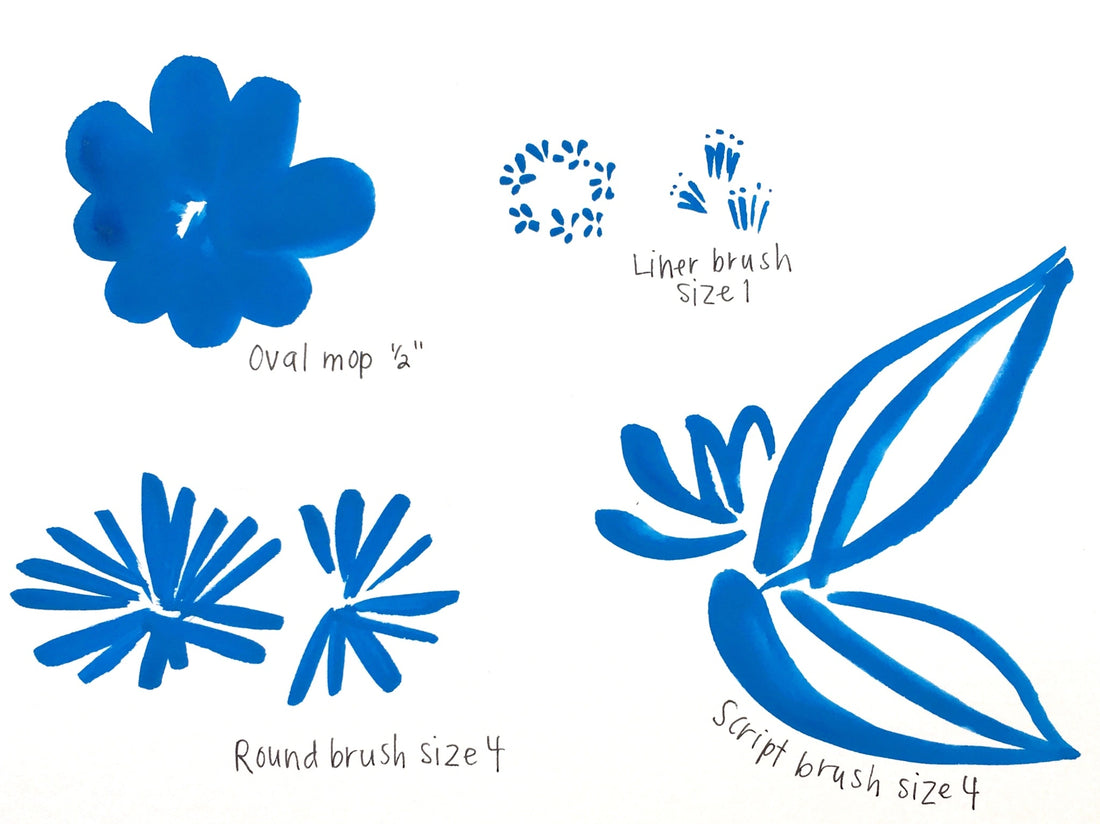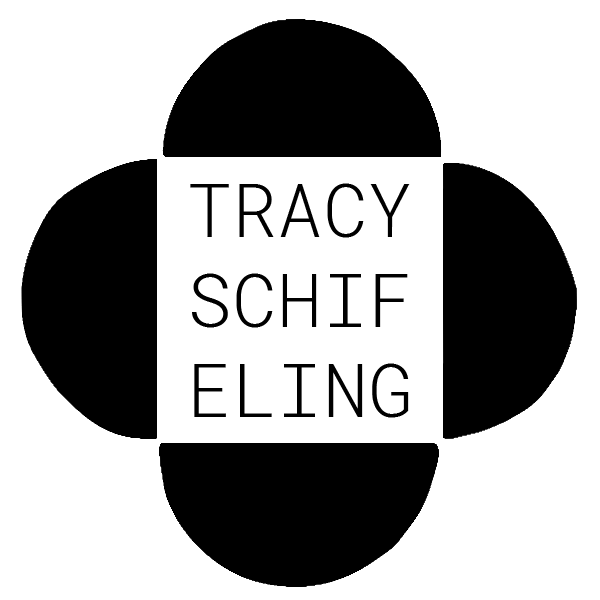
Developing a Language of Flowers
William Justema writes in The Pleasures of Pattern that each pattern designer develops their own shorthand for illustrating flowers, what he calls their “language of flowers.” I think this shorthand is influenced by our handwriting as well as what we see in flowers and what details attract our attention.
For me, I want to convey the gesture of the petals and the personality of the flower.
My language of flowers
Here I’ll share some of the creative process behind the flowers in my recent fabric designs.

When I see a flower I want to draw, I start to think of which brushes could capture the shape of the petals. I use the brush stroke to try to capture the gentleness or directness of the petal.
Developing a language of flowers takes a lot of practice! Practice with flower shapes and gestures, experiments with pencils and brushes. I mostly illustrate flowers with gouache paint and brushes meant for watercolor or gouache. For each brush, I experiment with what kinds of strokes I can make. This is helpful when I’m trying to figure out which brush will help me convey a certain flower.
The diagram below shows the flower shapes in my recent designs and what brushes I used.

Zinnias
When I see zinnias I see the vibrant colors and rounded petals (the “ray” flowers) and the delicate little yellow petals (the “disc” flowers). I used an oval mop brush for the outer petals and a liner brush for the small petals. My brush stroke with the oval mop went from the outside to the inside of the flower, so that the rounded petal edge is created by the roundness of the oval mop shape.

Japanese anemones
What I love about Japanese anemones is the slight floppiness of their petals. It’s like they are comfortable being themselves and relaxing :)
I tried to capture that casualness by painting the petals in different directions and not perfectly evenly. I used an oval mop brush for these petals. The pointy leaves are a nice contrast to the softness of the flowers, so I painted those in sumi ink for contrast.


Daisy garden
My friend sent me this photo of a garden in her neighborhood and I loved the mix of colors and types of flowers. There are purple daisies as well as California poppies and yellowy-orange cosmos. The foliage is quite interesting too, thin and weblike.
The daisy petals are very straight and strong so I used a round brush with a straight stroke to paint those. The poppies have a softer petal and I used the oval mop for those. I love cosmos (I used to grow them on my balcony garden) and I created each petal with a few strokes of a round brush (starting from the outside in) to get the frilly edge.


Abstract florals
I also love making up my own flowers! This floral uses a script brush meant for writing. Depending on the stroke you can get a thick or thin line, which can create a dramatic and expressive drawing. I was experimenting with how to paint leaves and then tried to think of what kind of flower might complement the leaf shapes.

Collecting flower inspiration
I get my flower inspiration from the Denver Botanic Garden, cut flowers from the grocery store or my favorite florists (follow Sacred Thistle or Cornell Florist for lots of unique flowers and arrangements), Pinterest, and garden websites like Baker Creek Heirloom Seeds or White Flower Farm.


I hope this post has shown that there isn’t one right way to draw flowers, and with practice you can develop your own language of flowers.
